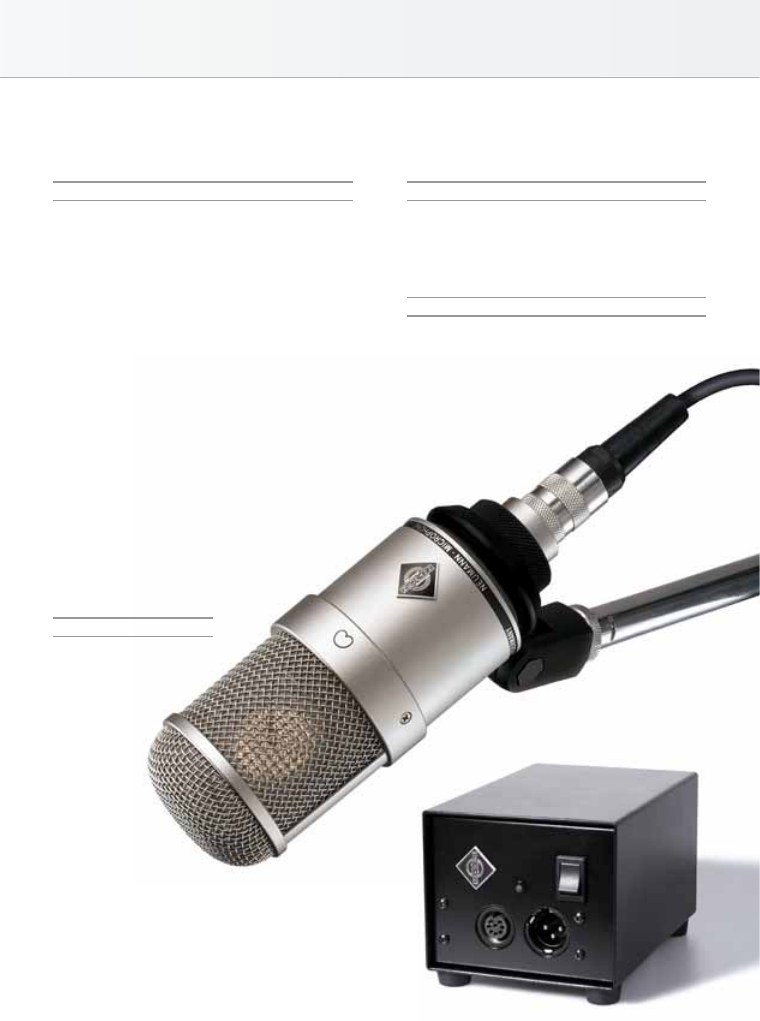
25
M 147 Tube
Filter
The electronic circuitry of the M 147 Tube mic has a flat
frequency response from 20 Hz to well above 20 kHz. Only
the attributes of the capsule determine the typical sound
characteristics of the microphone.
N 149 A Power Supply
The N 149A universal power supply works with all mains
AC voltages from 100V to 240 V, 50 or 60Hz. Mains
power is connected through a standard IEC320
mains socket. The only difference between the
three versions of the M 147 Tube set is the
power cord supplied. Note: The N 149 V
power supply is fully compatible
with the M 147Tube micro-
phone.
Electrical Features
When compared to other microphones, the impedance con-
verter used in the M 147 Tube is distinguished by its ex-
tremely low self-noise level of only 12 dB-A /24 dB CCIR
weighted.
Similar to the recently introduced M149 Tube, the new
M147 Tube combines a specifically selected vacuum tube
(triode) with modern circuitry. This technique takes full ad-
vantage of the special transfer characteristics of the tube and
passes the processed audio signal of the capsule to the mi-
crophone output, without any coloration or unwanted side
effects.
The tube amplifies the capsule’s signal by approximately
10dB, thus preventing any possible influences from subse-
quent electronics. The M147 Tube delivers a high output
voltage, and therefore can feed microphone cables up to
300 m length without signal degradation.
The ideal operating conditions (anode current and heater volt-
age) of the tube are maintained throughout its life expectan-
cy. A sensor lead detects any voltage drop that occurs through
the microphone cable and compensates for it in the N 149 A
power supply.
The tube warms up gradually using inverse cur-
rent limiting to guarantee long life.
Operational Stability
Both, the capsule and the
entire circuitry are
shock mounted to
prevent any struc-
ture-borne
noise.
Because of
its wide oper-
ating range, the
M 147 Tube
can reproduce
extremely low
frequency signals
without distortion.
This implies that the micro-
phone may also be sensitive to un-
wanted LF interference by structure-borne noise, or wind
noise. To avoid possible signal degradation, we offer the EA 1
elastic suspension and the WS 87 windscreen as accesso-
ries.
During close miking of vocals we recommend using the PS 15
or PS 20a pop screen. You will find detailed information in
our accessory catalog.


















